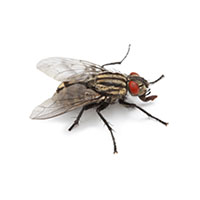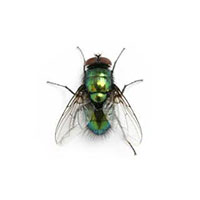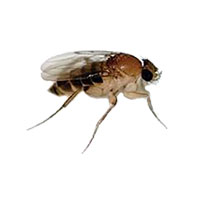Flesh Fly Diet
Adult flesh flies get their nutrition from liquids, so they tend to infest open wounds, animal remains, and excrement. These materials attract flesh flies and provide the ideal food source for the pests as well as a place to lay their eggs.
Flesh Fly Habitat
They are attracted to decaying wastes, pet excrement, human foods, and decaying animal remains. They frequently infest industrial buildings like meat processing and packing facilities. Forensic scientists can use the larvae collected at a murder site to determine the time of death.
Flesh Fly Life Cycle
The female deposits live larvae on suitable feeding mediums, including spoiled meat or fish, animal excrement, or in decaying meat and carcasses. The larvae feed for a few days and then move away from the feeding medium to pupate in adjacent drier parts. The flesh fly life cycle lasts for two to four weeks.
Flesh Fly Prevention and Removal Tips
Prevention is extremely difficult because the eggs develop into larvae before the female deposits them. This makes it difficult to stop the development of a generation of these flies, as they are deposited well beyond the fledgling egg stage of life. To ensure these flies don’t make their way near or onto your property be sure to do the following:
- Properly dispose of all decomposing materials
- Keep the property clean
- Seal holes and gaps
- Keep doors closed
- Check for animal carcass around the house
- Tie up garbage bag tightly and move outside
- Inspect animal excrement for larvae
Need help with Flesh Flies?
We'll call you! Leave your information below.





